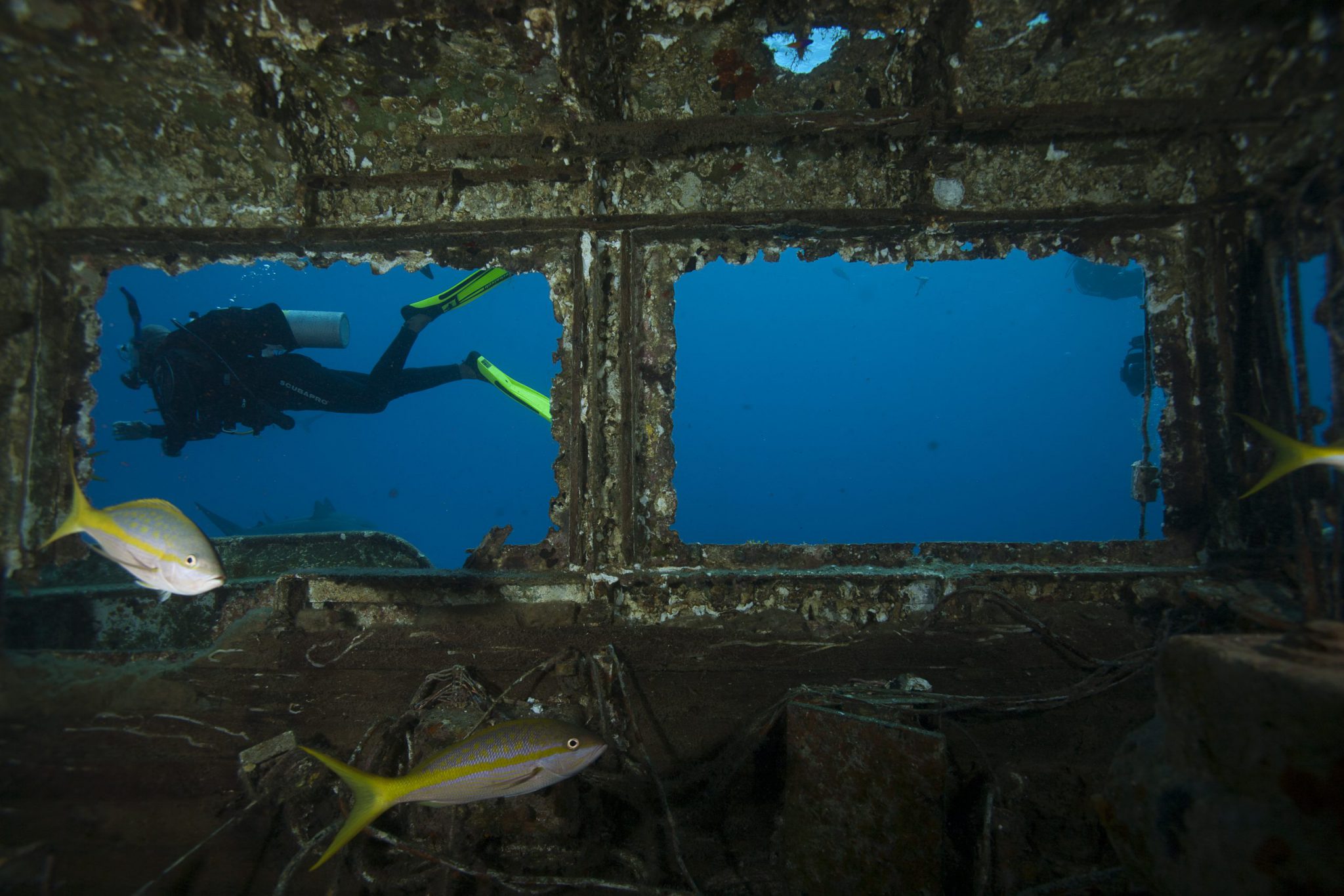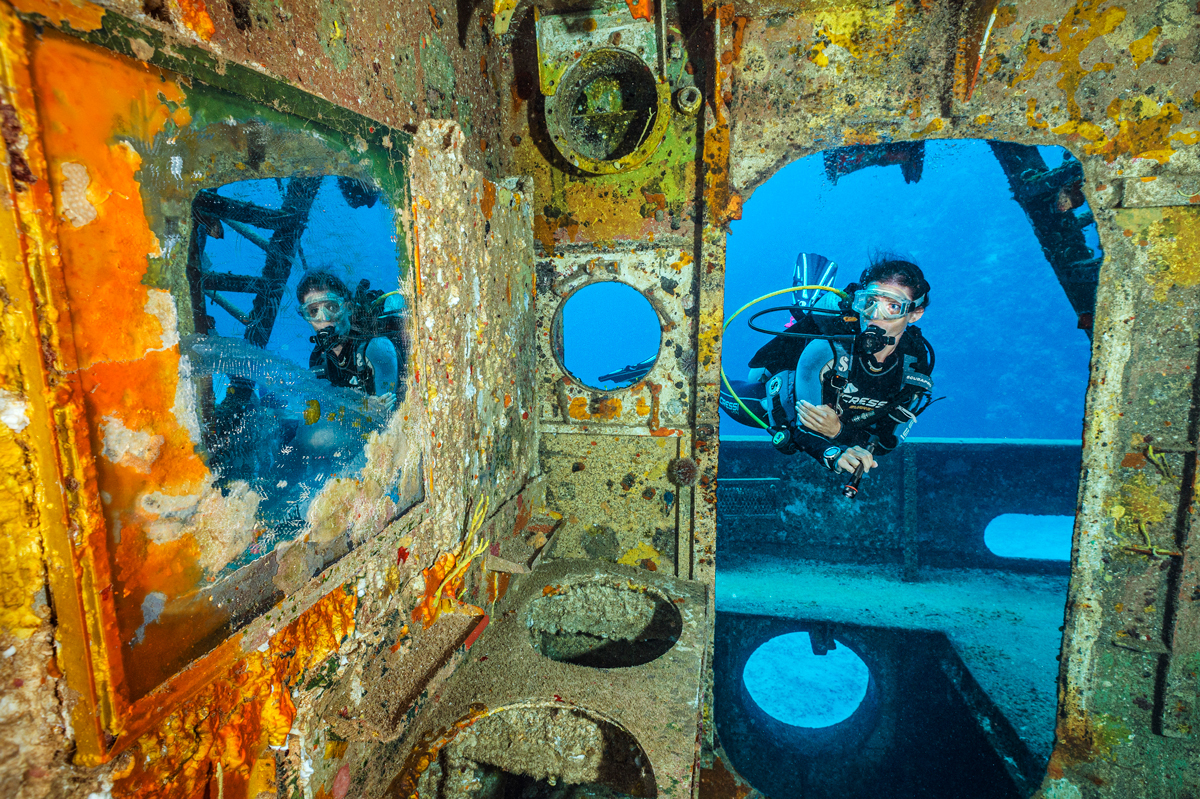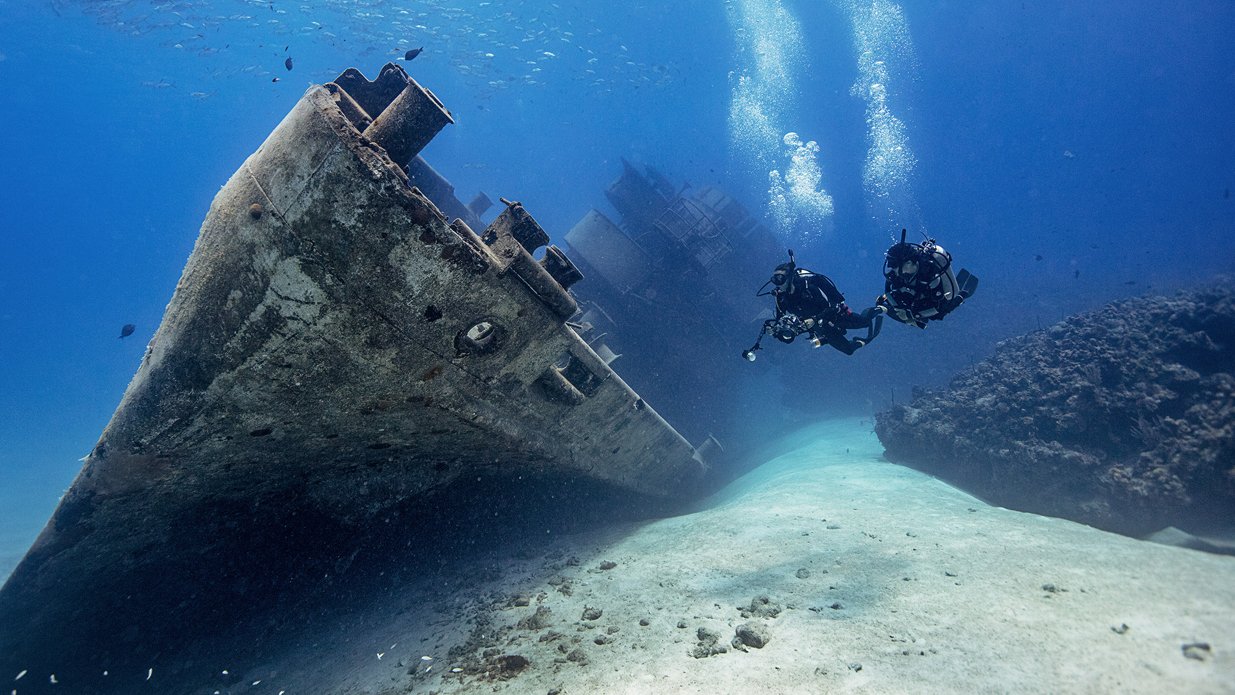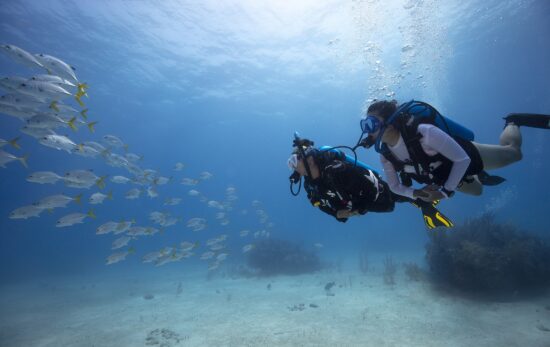For centuries, countless ships have found their resting place in the vast depths of the ocean, becoming time capsules of history and an unexpected home to a variety of marine life. Wreck diving gives you the unique opportunity to step back in time and explore these submerged pieces of history. It also presents a new set of challenges and opens the door to new experiences. Wreck travel destinations are bound to thrill any diver, which is why you should make the PADI Wreck Diver certification your next specialty course.
What is Wreck Diving?
Wreck diving offers a chance to explore sunken ships, planes, and other structures claimed by the sea. These sites are fascinating not only for their historical significance but also for their role as artificial reefs that support a diverse ecosystem of marine life.
Often, wrecks end up at the bottom of the ocean due to accidents or battles, but not always. Nowadays, more and more wrecks are being purposely sunk to create artificial reefs and provide an exciting new playground for divers. This benefits the environment by creating new spots for marine life to shelter and thrive. It can also take some pressure off natural reefs that might suffer from over-diving.
Purpose-sunk wrecks are designed with divers in mind, making them more accessible and safer to explore. They usually have multiple entry and exit points, well-placed artifacts, and features for divers to navigate. They are cleared of any hazards, and their chosen locations can be free from strong currents and at a depth suitable for recreational diving.

Why Should You Take a Wreck Diver Specialty Course?
While anyone with a basic scuba diving certification can find wrecks on a dive, taking a wreck diving specialty course can elevate your experience to a whole new level.
Here are five reasons why Wreck Diver should be your next specialty course.
1. Safety First
As with any type of diving, safety should always be the top priority when exploring wrecks. Wreck diving presents unique challenges that require specialized training. Keep in mind that wreck penetration should only be practiced after you’ve received training in wreck diving. Inside a wreck, divers often have to navigate tight spaces, deal with low visibility or disorientation, and face potential threats, such as sharp objects or entanglement hazards.
A wreck diving specialty course will teach you the necessary skills and techniques to safely explore wrecks. You’ll learn to handle any unexpected situations that may arise, including the use of specialized equipment, like reels and lights.
2. Learn Proper Wreck Diving Techniques
Wreck diving can be a whole different ball game and a test of your abilities as a diver. Navigating through the tight spaces of a wreck requires precision, control, and a keen awareness of your surroundings.
Wreck dives often involve penetrating narrow and confined spaces. This requires proper finning techniques to avoid stirring up silt or damaging delicate marine life.
In the PADI Wreck Diver Specialty course, you learn how to enter and exit wrecks safely, use guidelines to prevent getting lost, and proper techniques for buoyancy control to navigate around wreck structures without damaging them.

3. Dive with Confidence
Exploring wrecks can be an exhilarating experience, but it’s natural to feel apprehensive about entering an enclosed structure underwater. Taking a Wreck Diver Specialty course will give you the confidence and knowledge to dive safely and have an enjoyable experience.
You’ll also learn how to properly plan dives, including depth, currents, entry and exit points, and potential hazards, so you’ll feel prepared and at ease when exploring new wrecks.
4. Learn About Wreck Conservation
Wrecks are not just historical artifacts; they also serve as artificial reefs that support a diverse marine life ecosystem. As divers, it’s our responsibility to protect these fragile environments for future generations to enjoy. Taking a wreck diving specialty course will teach you proper diving techniques to reduce our impact on wreck sites and how to be an environmentally conscious diver.
5. Explore Historical Underwater Treasures
Wreck diving offers a unique opportunity to explore well-preserved historical sites under the sea. These wrecks can range from ancient pirate vessels to more recent warships, and each has its own story to tell.
For example, you can dive into the famous Thistlegorm wreck in Egypt, a World War II cargo ship that was sunk by German bombers, and see much of its military equipment and vehicles still intact. Or, you can travel to destinations, such as Chuuk (Truk) Lagoon in Micronesia. Here you can see the so-called “Ghost Fleet of Truk,” the world’s largest collection of WWII shipwrecks including over 50 boats and hundreds of planes sunk during a single battle.
These historical sites aren’t just silent observers of the past. They’re also captivating museums beneath the waves that few people get the opportunity to explore.

Become a PADI Wreck Diver
The PADI Wreck Diver Specialty course is more than just another certification; it’s a gateway to a world of adventure, mystery, and discovery, like swimming into a living, breathing history lesson. It’s a chance to deepen your diving skills, expand your understanding of our past, and satisfy your thirst for exploration.
So why wait? Contact your local dive shop to sign up for the Wreck Diver Specialty course now.





